
Er-2 2M-105 of 421 DBAP, summer-fall 1941. It bears the new black-green camouflage.

The asymmetric canopy of Yer-2 M-105 is particularly well visible in this image.
It shows a camouflage not far from the standard of Pe-2s, with light bue undersurfaces. The fuselage star has a tiny white or silver outline, and there is a two-digits white number (possibly 10) on the rudder.
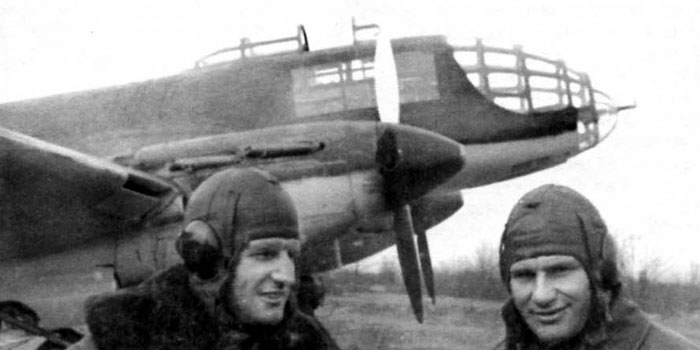
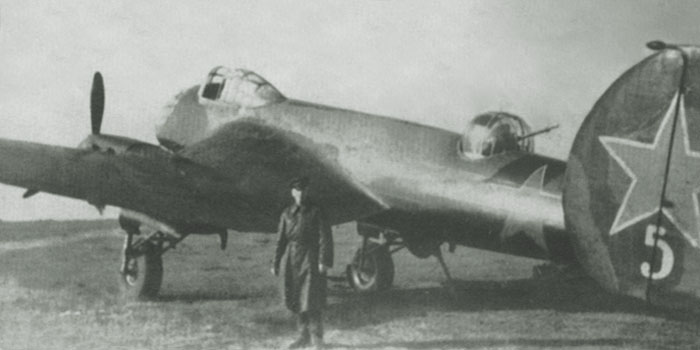
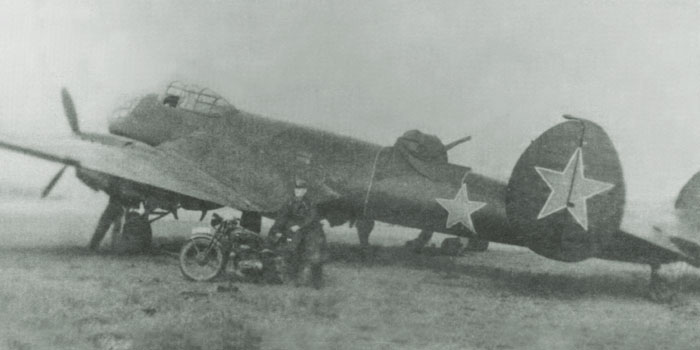
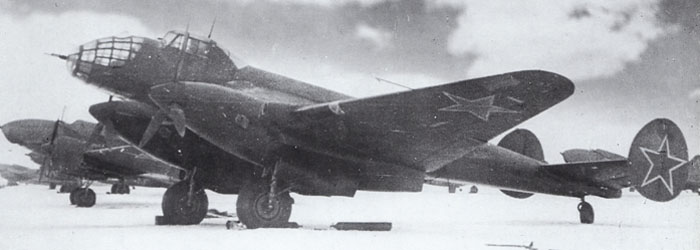
Although bearing later style stars, this later type Er-2 with ATch-30B diesel engines and side-to-side pilots cockpit seems to bear the same black-green camo scheme of Pe-2s.
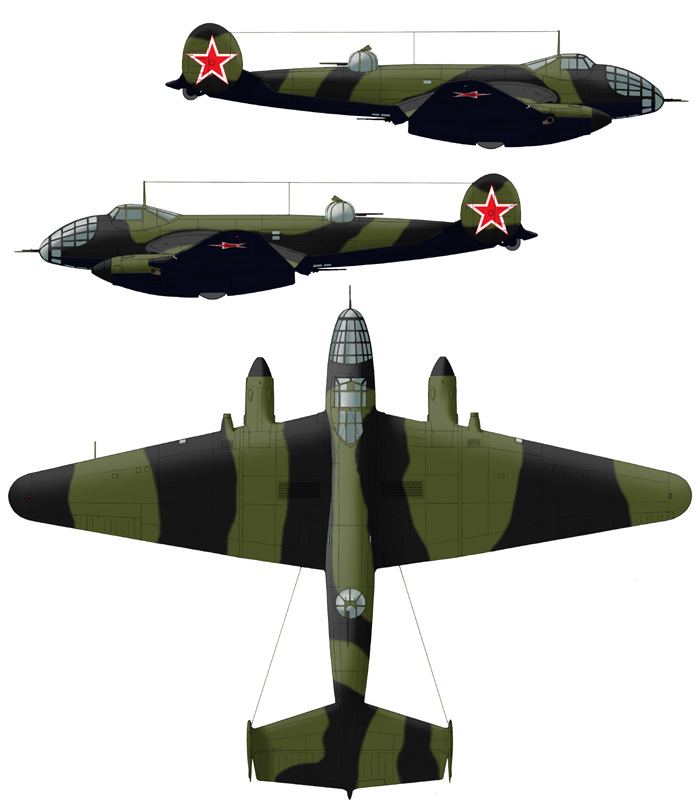
The most visible differences between the early version of Yer -2 and this later one are:
- the engines, well distinguishable because of the turbo-compressor exhaust instead of the standard pipes of the early type;
- the symmetric canopy with paired seats;
- the small trasparent bulbe over the nose (not always present)
- the wing water coolers inside the nacelles instead of outside, and the faired intake for engine air on the leading edgethe radio mast
- the main landing gear doors without cut for the wheels (not always)
- the deletion of the balancing weights on the rudders
- the different stylo of turret on the back
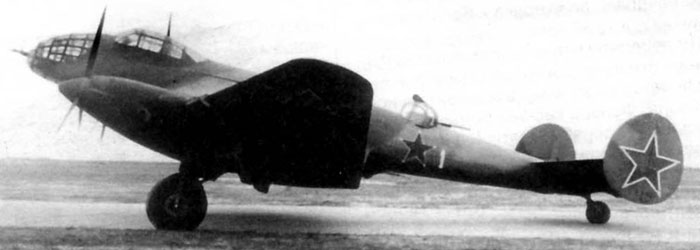
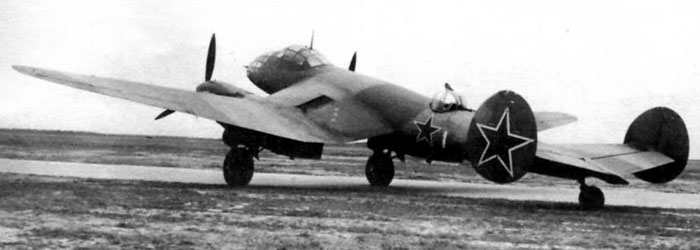
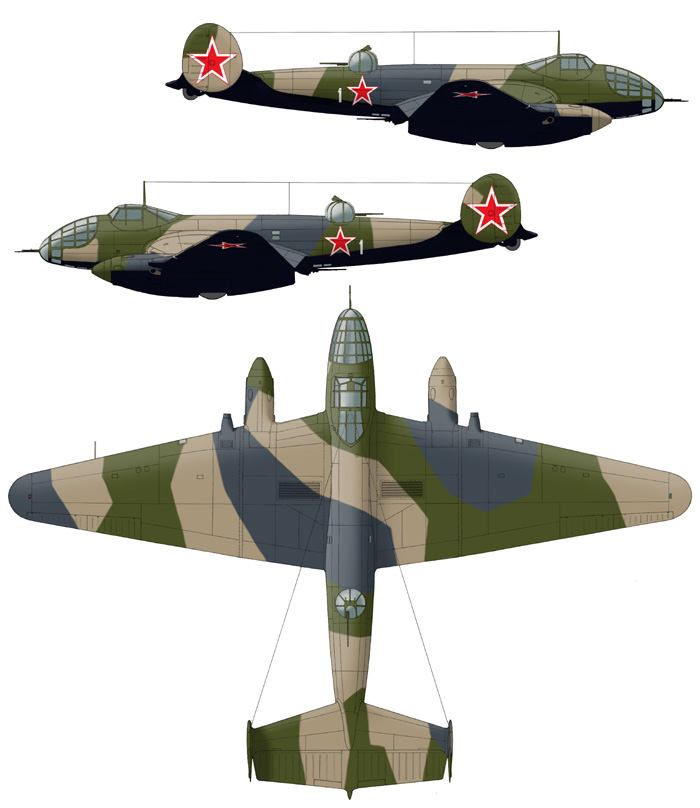
An interpretation of the camo scheme of white 1, traced with the help of the 1st template of 1943 for Pe-2, that looks compatible enough.
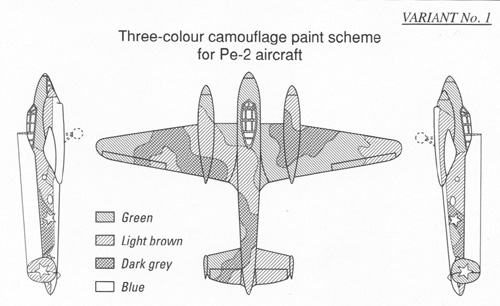
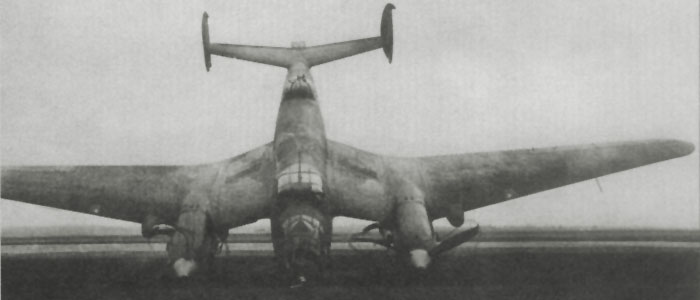
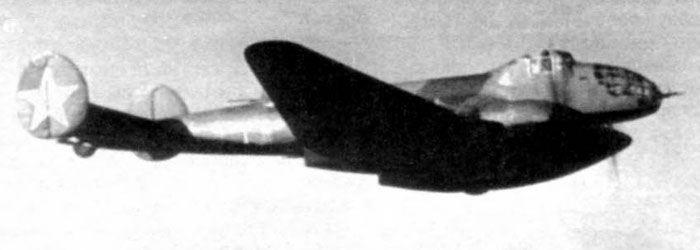
This nosed-down plane shows its upper camouflage, scarcely contasted but interpretable with the help of the 2nd template of 1943 for Pe-2. Unfortunately the fuselage numbers aren't visible at all. Spinners could be painted with some bright color.
This image of plane white 1 could be compatible with the same camo pattern.
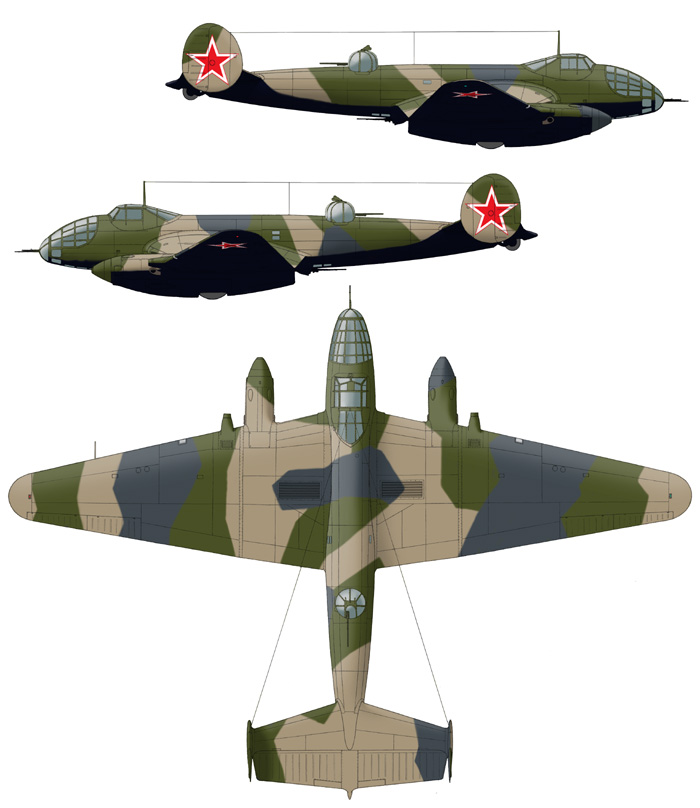
An interpretation of the camo of the plane photographed above.
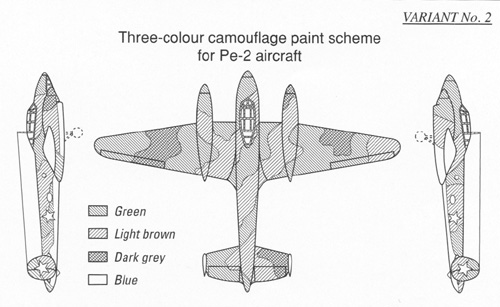

In late 1944 the Soviet Air Force had altready reached a position of superiority over the German Luftwaffe and its alleys. While Germans reverted to green/brown camouflages to hide better their planes on the ground, the Soviets decided to extend to all planes the blue grey/dark grey camouflage that has been successful for fighters since August 1943. On October 1, 1944, the Resolution n.6339 was approved, but burocratic delays retarded its publication till January 1945.
To better paint all-metal planes, the new oil color A-33m entered in inventory; it was equivalent to blue-grey AMT-11, but darker, and often referred as 'dark greyish-blue' instead of 'greyish blue' as its nitro counterpart.
No any template was provided for the Yer-2 bomber, but, as on previous instructions, the template of Pe-2 was of some help.
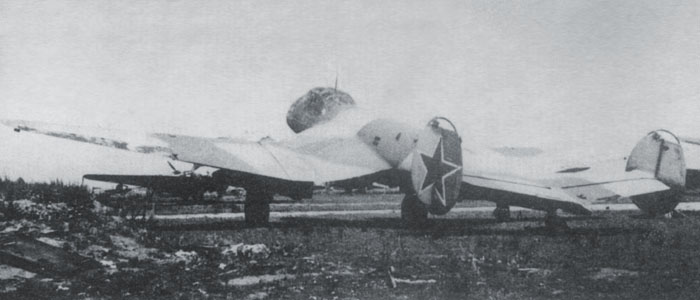
This image of Yer-2 of 327 BAP, possibly taken in spring 1945 (apparently, traces of snow are visible on the ground) shows a surprising two-shades splinter camouflage having some resemblance to the 1945 grey/grey template for Pe-2. It's clearly a rare demonstration of the application of the new camouflage to a bomber. Unfortunately, bort numbers are not visible.
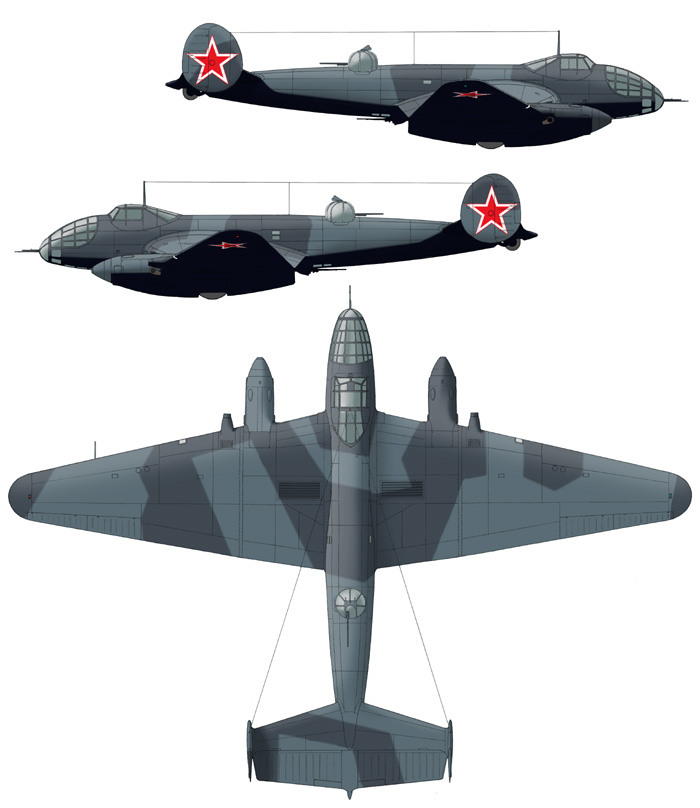
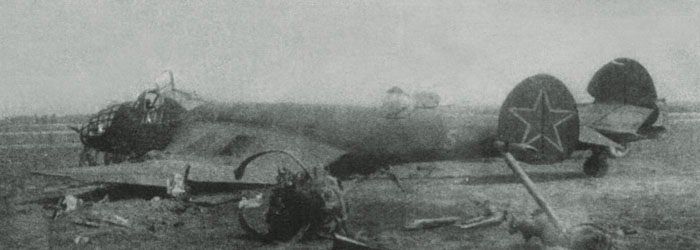
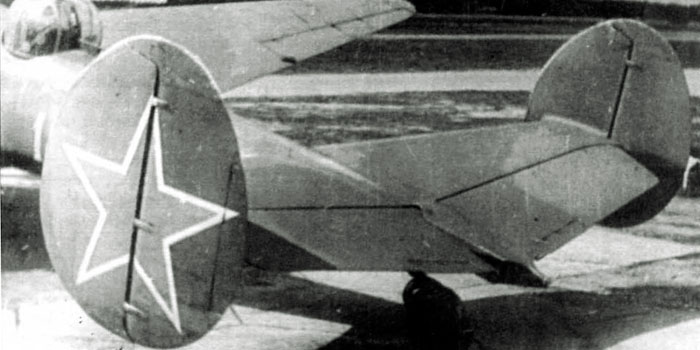
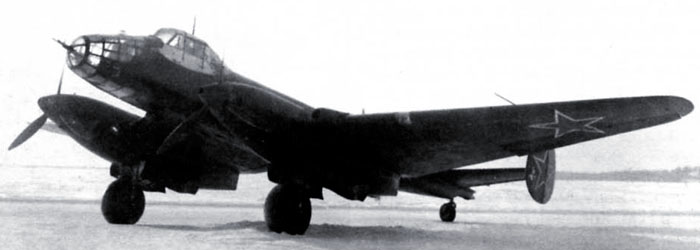
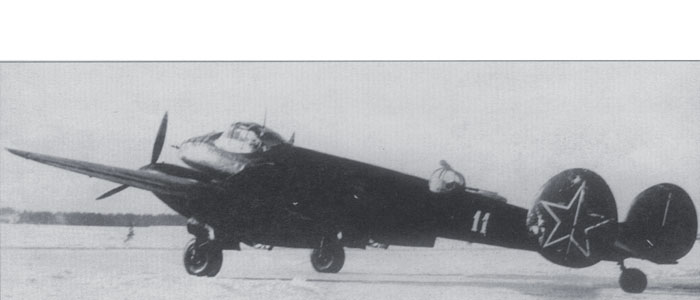
Two images of white 11, a Yer-2 with ATch-30B diesel engines, during some tests at NII VVS in winter 1945. It is painted overall black; some external armors on the cockpit sides are still unpainted. On other photos of the same plane, the side armors appear painted black as all the plane.
Note the straighter and lower profile of the nose of this plane when compared to the ones of the photos above.